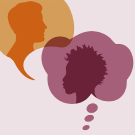A 280-million-year-old reptile fossil that puzzled researchers for decades is a fake, archaeologists have said.
Analysis of the creature, dubbed Tridentinosaurus antiquus, has revealed the material that was thought to be well-preserved, ancient soft tissue is, in fact, just black paint.
The lizard-like animal, about 20cm (8in) long, was discovered in the Italian Alps in 1931 and was believed to be an important finding that could help shed light on how reptiles evolved.
With its body outline appearing dark on the surrounding rock, the reptile’s remarkable preservation was previously attributed to a fossilisation process known as carbonisation, which is relatively common among plant specimens but rare among animals.
This led the Tridentinosaurus to be classified as a member of the reptile group known as Protorosauria and its purported fossilised skin, although never studied in detail, gained prominence in news articles and books.
However, the strange features of the fossil left many palaeontologists wondering where the reptile belonged and how did it come to be so well-preserved.
A team of researchers in Ireland and Italy analysed the fossil using UV photography, which revealed a coating material on the specimen.
The researchers said that coating fossils with varnishes or lacquers was quite common in the past as a way to preserve the specimen.
Dr Valentina Rossi with an image of Tridentinosaurus antiquus as the 280-million-year-old reptile fossil
(Zixiao Yang/University College Cork/PA Wire)
So the team was hoping that beneath the coating layer, original soft tissues would be present and would be in good condition.
However, a microscopic analysis then revealed the texture and composition of the material did not match that of genuine soft tissue fossils.
The researchers said their findings revealed the body outline of the Tridentinosaurus was artificially created with black paint, coated on the carved lizard-shaped rock surface.
Based on their findings, published in the journal Palaeontology, the researchers are urging caution about the fossil and how it is used in future research.
Professor Evelyn Kustatscher, a palaeobotanist at the Natural Science Museum of South Tyrol in Italy, said: “The peculiar preservation of Tridentinosaurus had puzzled experts for decades.
“Now, it all makes sense.
“What was described as carbonised skin is just paint.”
Dr Valentina Rossi, of University College Cork’s School of Biological, Earth and Environmental Sciences in Ireland, added: “Fossil soft tissues are rare, but when found in a fossil they can reveal important biological information, for instance, the external colouration, internal anatomy and physiology.
“The answer to all our questions was right in front of us, we had to study this fossil specimen in detail to reveal its secrets – even those that perhaps we did not want to know.”
However, the researchers said that despite the setback, the fossil is not a complete forgery.
The bones of the hindlimbs and the femurs appear to be genuine but poorly preserved, they said.












